[ad_1]
When Ariane Arsenault bought a second shop to accommodate her small but growing soap business three years ago, she was captivated by the expansive views of Canada’s Magdalen Islands. “You step out the door and turn left, you see the ocean. When you turn right, you see the ocean,” she says. “It’s beautiful.”
A lifelong resident of this archipelago in Quebec, far into the Gulf of St Lawrence, Arsenault has always lived beside vast bodies of water.
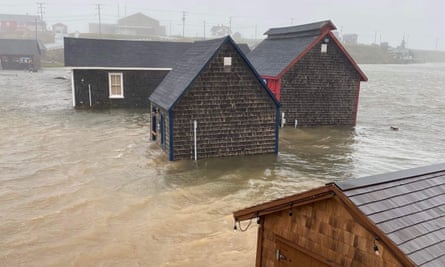
So in September, when powerful winds and storms lashed communities on Canada’s Atlantic coast – transforming buildings into splintered heaps, sheared off miles of coastline into the ocean, and left hundreds of thousands of people huddled in the dark – the storm challenged her sense of resilience.
“I’ve seen storms all through my life and they’re getting more intense. But this is our home. People on social media tell me it’s time for me to leave. No,” says Arsenault, whose shop was inundated with saltwater when tides surged to unprecedented levels. “This is my business; this is where my family lives. I love it – and I’m not going anywhere.”
But although the region has a long and proud history of fortitude in the face of devastation, where fierce gales are part of maritime lore, the steadfastness of Magdalen Islanders – and of other communities across the country battered by damaging storms – has increasingly clashed with a blunt reality: many homes are now in effect uninsurable. And the changing climate will only make that problem worse.
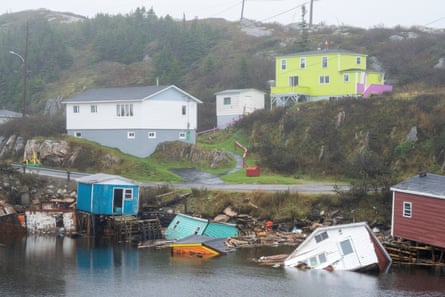
In Canada, the number of uninsurable homes has reached 10%, according to industry figures. The Magdalen archipelago is losing half a metre each year to erosion, roads have fallen into the sea and the sand dunes that once offered protection from squalls are disappearing faster than they can be saved, but it is not just there. Most of Canada’s major cities are built on the frontlines of a changing climate – along rivers and coastlines or on flood plains.
This has long troubled the risk-averse insurance industry across the globe. Although it has the world’s longest coastline, Canada is far from alone in the crisis. Indonesia, which has the second-longest coast, has lost much of its natural protection against the encroaching sea, as mangrove forest disappears and the land sinks due to over-extraction of groundwater. Thawing permafrost has shed thousands of hectares of Russian coastline into the ocean and stretches of Australia’s Gold Coast are at severe risk from erosion and storm-surge damage.
Over the past 15 years, insurance claims from severe weather events in Canada – windstorms, flooding, wildfire and drought – have more than quadrupled. Seven of the country’s costliest disasters occurred in the last decade. Insurers now expect to disburse C$2bn (£1.3bn) in disaster-related payouts annually, with costs only expected to rise.
A federally run fund, meant to help communities build disaster-resilient infrastructure, is quickly running out of money years before it expires at the end of the decade. It has already received far more requests than it can pay for, and despite the federal government repeatedly topping it up, more than half of the money has been spent.
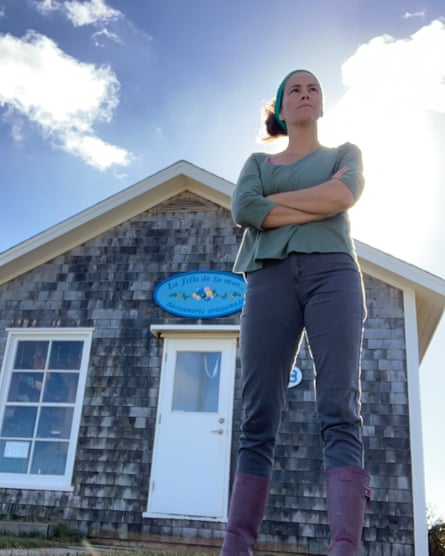
The Insurance Bureau of Canada (IBC), a trade body, estimates that nearly 800,000 homes are in effect uninsurable because of their proximity to flood waters. Those homes account for nearly 90% of the insurance industry’s financial liability.
“Without any sort of concerted effort or gameplan, that figure will only grow. We’re continuing to build in harm’s way, largely on water, because that’s where people love to be. And the modelling shows that these storm events are just going to become more frequent and more intense in the years ahead,” says Craig Stewart, vice-president of the IBC’s climate change and federal issues portfolio. “The risk is growing. And so far, our efforts at risk reduction have been terrible.”
The IBC has pushed for the federal government to play a larger role in flood insurance – either through a partnership with insurance companies, similar to the UK’s Flood Re scheme, or a national government-run insurance programme as exists in the US.
In the absence of a deal, however, Stewart has warned that the costs could be too high for insurance companies to operate in certain markets around the world where extreme weather disasters are increasingly common.
“The private market, on its own, cannot handle the level of risk that’s escalating in the system without some sort of formal government backstop or direct participation.”
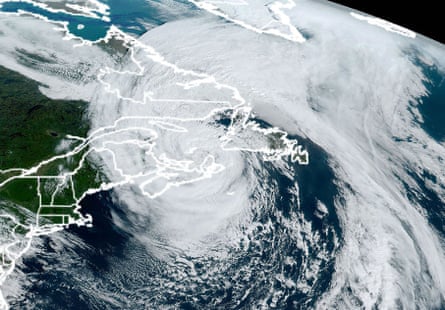
In the US, Florida has blocked insurers from withdrawing from the market for at least two months after Hurricane Ian. Officials in the US have also warned residents about the dangers of rebuilding in areas likely to suffer weather-related disasters.
“It’s no secret the best insurance is concrete, steel and wood,” said Keith Porter, chief engineer for the Institute for Catastrophic Loss Reduction, a research centre set up by the insurance industry to advise governments.
But Porter says rebuilding in high-risk areas is a delicate calculation. “If you rebuild in a more thoughtful way, but the road is going to be washed out, and you’re going to be stranded in your safe bubble, then it might not make sense to build back.”
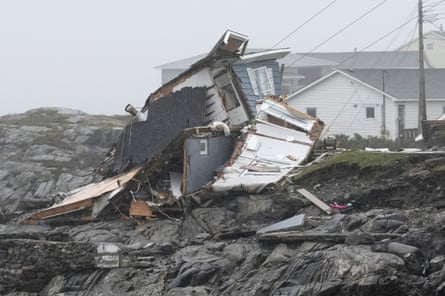
Many jurisdictions lack a national zoning code – a series of rules and standards that dictates where buildings and infrastructure can be built. Such planning guidelines would be welcomed by disaster-management experts and the insurance industry, they say.
In Canada, for example, which lacks such planning rules, municipalities and provinces are free to allow new buildings in high-risk areas such as flood plains. In many cases, such developments have been relatively unrestricted for decades.
In November 2021, a powerful “atmospheric river”, a plume of water-laden air, led to widespread flooding in the province of British Columbia. Highways and bridges were washed away and thousands of homes – built on an old lake bed that was a known flood plain – were submerged in turbid waters. The damage cost insurers nearly C$675m – with billions more in uninsured costs having to be borne by residents and government.
The floods also hit the town of Lytton, British Columbia, which a few months earlier had been the site of scorching temperatures before it was all but destroyed by a wildfire. In the aftermath, the uncertainty of how to rebuild – or whether to rebuild – has become a flashpoint.
“There was conflict between people who wanted to rebuild Lytton better, and those who were traumatised by the fire and they wanted to put their lives back together as quickly as possible without any change,” says Porter. “They didn’t want to be told what to do. They didn’t want outsiders coming in and telling them you must change your life in such a way.”
Governments are bracing for the mounting costs from extreme weather to upend life in cities. A recent report warned that floods and droughts could cost the global economy US$5.6tn by 2050.
In the past, provincial governments in Canada offered to compensate homeowners who were thinking about moving away from flood-prone areas as a way of mitigating risk.
But the programmes have seen limited success – both because residents say the compensation is too low to afford a house elsewhere – and because many feel a strong tie to the land, which they are unwilling to sever.
Some provinces have also signalled a growing unwillingness to compensate people in high-risk areas. After floods in 2019, Quebec’s premier, François Legault, said climate change meant compensation programmes would need to be adjusted, capping total payouts for flood victims and suggested the province could not continue to “waste the money” of taxpayers to compensate residents in areas where flooding was likely to recur.
And in the aftermath of Fiona, Legault refused to guarantee the Magdalen Islands a specific share of the C$100m pledged to guard against shoreline erosion.
In November, before Cop27, the federal government is expected to announce its National Adaptation Strategy, a multi-year plan to mitigate the growing risks posed by the climate crisis.
But Stewart, of the IBC, says officials often think of adaptation as a “fuzzy long-term idea” instead of focusing on the danger posed by not acting immediately.
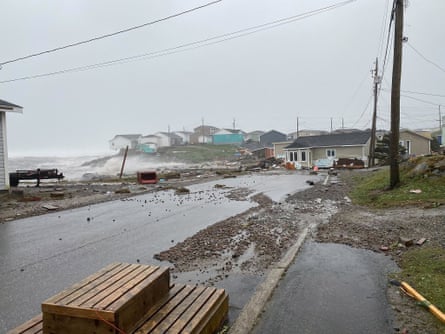
“It has been an absolute battle to get government officials to focus on near-term risks like wildfires, floods and extreme heat,” says Stewart. “We’re not prepared for these events in the near term.
“Insurers price risk – and Canada is becoming a far riskier place to insure.”
As she sorts through the aftermath of the storm, Arsenault, who had flood insurance but is saddled with a C$25,000 excess on the policy and is ineligible for provincial aid, says she fully expects her insurer to refuse to cover her property in the future – or that her premiums will surge.
She is thankful her community was not hit as badly as others, referring to the “horrible” images from neighbouring provinces. “I hope this never happens to us,” she says. “But it could.”
[ad_2]
Source link
